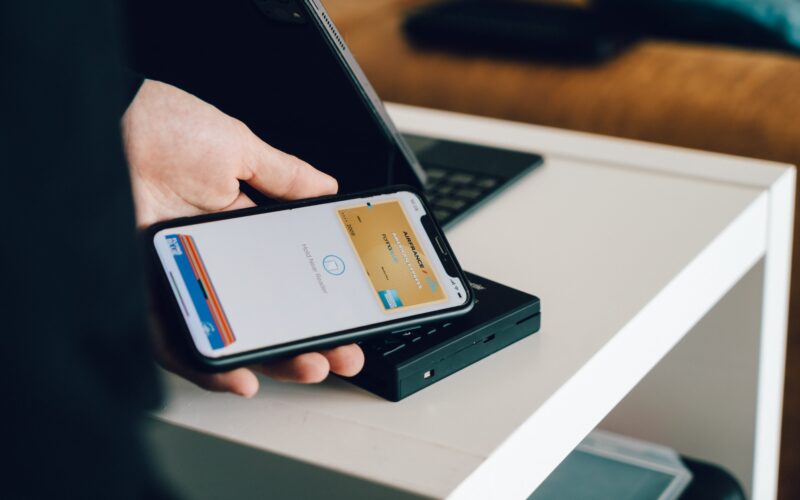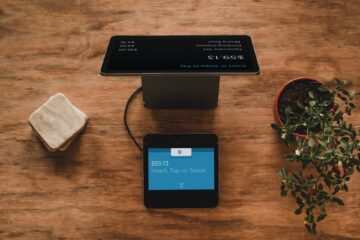Mobile payment technology is revolutionizing the way people pay for goods and services. With the rise of smartphones and mobile devices, mobile payments have become an increasingly popular alternative to traditional payment methods. Mobile payments refer to the use of a mobile device to make a payment or transfer money, typically through an app or digital wallet.
The impact of mobile payment technology on the financial industry has been significant. Mobile payments have enabled financial institutions to provide faster and more convenient payment services to their customers. The use of mobile payments has also increased financial inclusion, providing access to financial services to underserved populations who may not have access to traditional banking services.
Mobile payments have seen a significant growth in recent years, with global mobile payment transaction values projected to reach $4.9 trillion in 2024. This growth has been driven by factors such as increased smartphone adoption, improved mobile network infrastructure, and the proliferation of mobile payment solutions. In addition, the COVID-19 pandemic has accelerated the adoption of contactless payment methods, including mobile payments, as people seek to minimize physical contact and reduce the spread of the virus.
However, while mobile payments offer many benefits, they also have some drawbacks that must be considered. As mobile payments become more widespread, it is important for consumers and businesses to understand both the benefits and drawbacks of mobile payment technology, to make informed decisions about whether to use mobile payments and how to use them responsibly.
The Benefits of Mobile Payment Technology
Mobile payment technology offers numerous benefits to consumers, businesses, and financial institutions. Here are some of the key benefits of mobile payment technology:
- Convenience and ease of use: Mobile payments provide a quick and easy way for users to make transactions without the need for physical cash or cards. Users can simply use their mobile device to make a payment, eliminating the need to carry around multiple cards or cash. This convenience makes mobile payments an attractive option for users who are always on the go and want to complete transactions quickly.
- Speed of transactions: Mobile payments reduce the time required for payment processing and increase transaction speed, allowing users to complete purchases quickly and efficiently. Traditional payment methods such as cash or credit cards often involve a delay in payment processing, but mobile payments can be processed in real-time, reducing the time spent waiting for payment confirmation.
- Enhanced security measures: Mobile payment technology provides advanced security measures to protect user data, such as encryption and biometric authentication. Mobile payment apps also often allow users to remotely lock or wipe their device in case of theft or loss, adding an extra layer of security.
- Improved financial management and budgeting: Mobile payment technology enables users to track and manage their finances more effectively by providing detailed transaction history and budgeting tools. Users can easily view their transaction history, categorize transactions, and set spending limits or alerts, helping them to manage their finances more efficiently.
Overall, mobile payment technology provides numerous benefits that make it an attractive option for consumers, businesses, and financial institutions alike. With the convenience, speed, security, and improved financial management that mobile payments offer, it is clear why mobile payment technology is becoming an increasingly popular payment method.
The Drawbacks of Mobile Payment Technology
While mobile payment technology offers numerous benefits, it also has some drawbacks that should be considered. Here are some of the key drawbacks of mobile payment technology:
- Limited availability and adoption: While mobile payment technology is becoming increasingly popular, not all merchants and customers have adopted mobile payment technology. This can limit the convenience and ease of use for some users, especially in areas where mobile payment technology is not widely available.
- Potential security concerns: Mobile payment technology may be vulnerable to hacking or fraud, leading to potential security breaches and financial losses for users. Cybercriminals can use various techniques such as phishing attacks, malware, and social engineering to obtain users’ personal and financial information, leading to unauthorized transactions or identity theft.
- Dependence on technology: Mobile payment technology requires a reliable internet connection and a functioning mobile device. This can be problematic if there are issues with either, such as poor network coverage, low battery, or a damaged device. Users may also need to ensure that their mobile devices are up-to-date with the latest security patches and software updates to reduce the risk of security breaches.
- Potential for overspending: The ease of use and convenience of mobile payments may encourage users to overspend or make impulsive purchases. Mobile payment apps often store payment information and enable one-click purchases, making it easier for users to make purchases without thinking about their budget or financial goals.
It is important for users to weigh these factors when deciding whether to use mobile payment technology and how to use it responsibly. Users should ensure that they only use trusted and secure mobile payment apps, keep their devices secure and up-to-date, and monitor their spending and budgeting carefully to avoid overspending.
Case Studies of Successful Mobile Payment Implementations
There are numerous examples of successful mobile payment implementations across different industries and regions. Here are some case studies of successful mobile payment implementations:
- Starbucks: Starbucks has been one of the pioneers in mobile payment technology, with its mobile app allowing users to order and pay for their drinks through their mobile devices. The app has been a huge success, with over 40% of transactions at Starbucks stores in the US now being made through the app. The app’s success has been attributed to its ease of use, convenience, and integration with the Starbucks rewards program.
- WeChat Pay: WeChat Pay is a mobile payment solution offered by the Chinese social media platform WeChat. WeChat Pay has become one of the most popular mobile payment methods in China, with over 900 million monthly active users. WeChat Pay’s success has been attributed to its integration with WeChat’s social features, making it easy for users to send and receive payments within their social networks.
- Uber: Uber’s mobile app allows users to book and pay for rides through their mobile devices. The app has been a huge success, with over 100 million users globally. The app’s success has been attributed to its ease of use, convenience, and integration with Uber’s ride-sharing platform.
- Small businesses: Mobile payment technology has also had a significant impact on small businesses, enabling them to compete with larger companies and provide better customer service. For example, mobile payment solutions such as Square and PayPal Here have enabled small businesses to accept payments through mobile devices, reducing the need for costly point-of-sale systems.
These case studies demonstrate the potential benefits of mobile payment technology for businesses and consumers. Mobile payment technology can enable businesses to offer more convenient and efficient payment options to their customers, while also improving financial management and reducing costs. For consumers, mobile payment technology can provide a fast and convenient way to make purchases, without the need for cash or cards.
Future of Mobile Payment Technology
The future of mobile payment technology is exciting, with numerous trends and innovations that are likely to transform the way we make payments. Here are some of the key trends and innovations in mobile payment technology:
- Contactless payments: The COVID-19 pandemic has accelerated the adoption of contactless payment methods, including mobile payments. As more consumers seek to minimize physical contact and reduce the spread of the virus, contactless payments are likely to become even more popular in the future.
- Biometric authentication: Mobile payment apps are increasingly using biometric authentication, such as fingerprint or facial recognition, to enhance security and prevent fraud. Biometric authentication is more secure than traditional passwords or PINs and is also more convenient for users.
- Wearable technology: The rise of wearable technology, such as smartwatches and fitness trackers, is likely to lead to the increased adoption of mobile payments through these devices. Wearable technology can offer a more convenient and seamless payment experience, without the need to carry a mobile device.
- Cryptocurrencies: The growing popularity of cryptocurrencies, such as Bitcoin and Ethereum, is likely to lead to the adoption of mobile payment solutions that support these currencies. Mobile payment apps that support cryptocurrencies can offer faster and more secure transactions, with lower transaction fees compared to traditional payment methods.
- Internet of Things (IoT): The integration of mobile payment technology with IoT devices, such as smart home appliances and vehicles, can offer new opportunities for mobile payments. For example, users could make payments for gas or tolls through their connected vehicles, or pay for groceries through their smart refrigerators.
These trends and innovations are likely to have a significant impact on the future of mobile payment technology, transforming the way we make payments and interact with financial services. As mobile payment technology continues to evolve, it is important for businesses and consumers to stay up-to-date with the latest trends and innovations to take advantage of the benefits that mobile payments offer.
Conclusion
In conclusion, mobile payment technology offers numerous benefits and drawbacks that should be considered when deciding whether to use it as a payment method. Mobile payments provide convenience, speed, enhanced security, and improved financial management, making them an attractive option for consumers, businesses, and financial institutions alike. However, mobile payments also have some drawbacks, including limited availability, potential security concerns, dependence on technology, and potential for overspending.
To ensure responsible use of mobile payment technology, users should weigh the benefits and drawbacks carefully, use trusted and secure mobile payment apps, keep their devices secure and up-to-date, and monitor their spending and budgeting carefully to avoid overspending. It is also important for businesses to consider the potential benefits of mobile payment technology, such as improved customer service and reduced costs.
Looking to the future, the continued growth and evolution of mobile payment technology will transform the way we make payments and interact with financial services. The adoption of contactless payments, biometric authentication, wearable technology, cryptocurrencies, and IoT devices will offer new opportunities for mobile payments, making them even more convenient, efficient, and secure.
In conclusion, mobile payment technology has the potential to revolutionize the way we make payments, but responsible use and awareness of the benefits and drawbacks are key to ensuring its success. As mobile payment technology continues to evolve, it will be important for consumers, businesses, and financial institutions to stay up-to-date with the latest trends and innovations to take advantage of the benefits that mobile payments offer.




